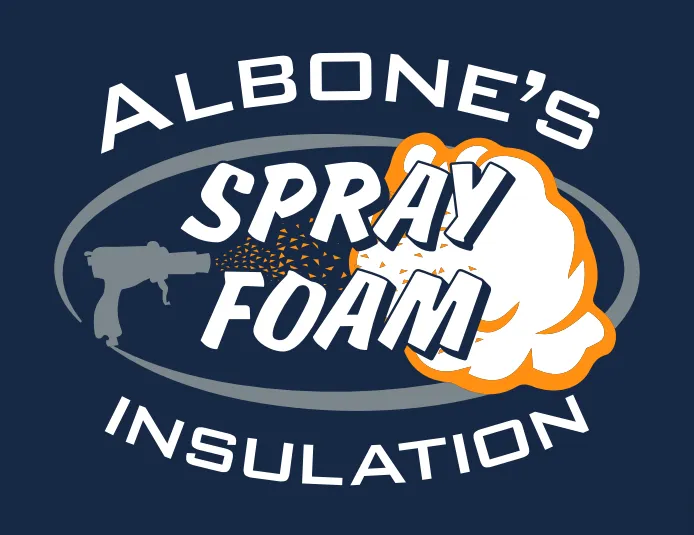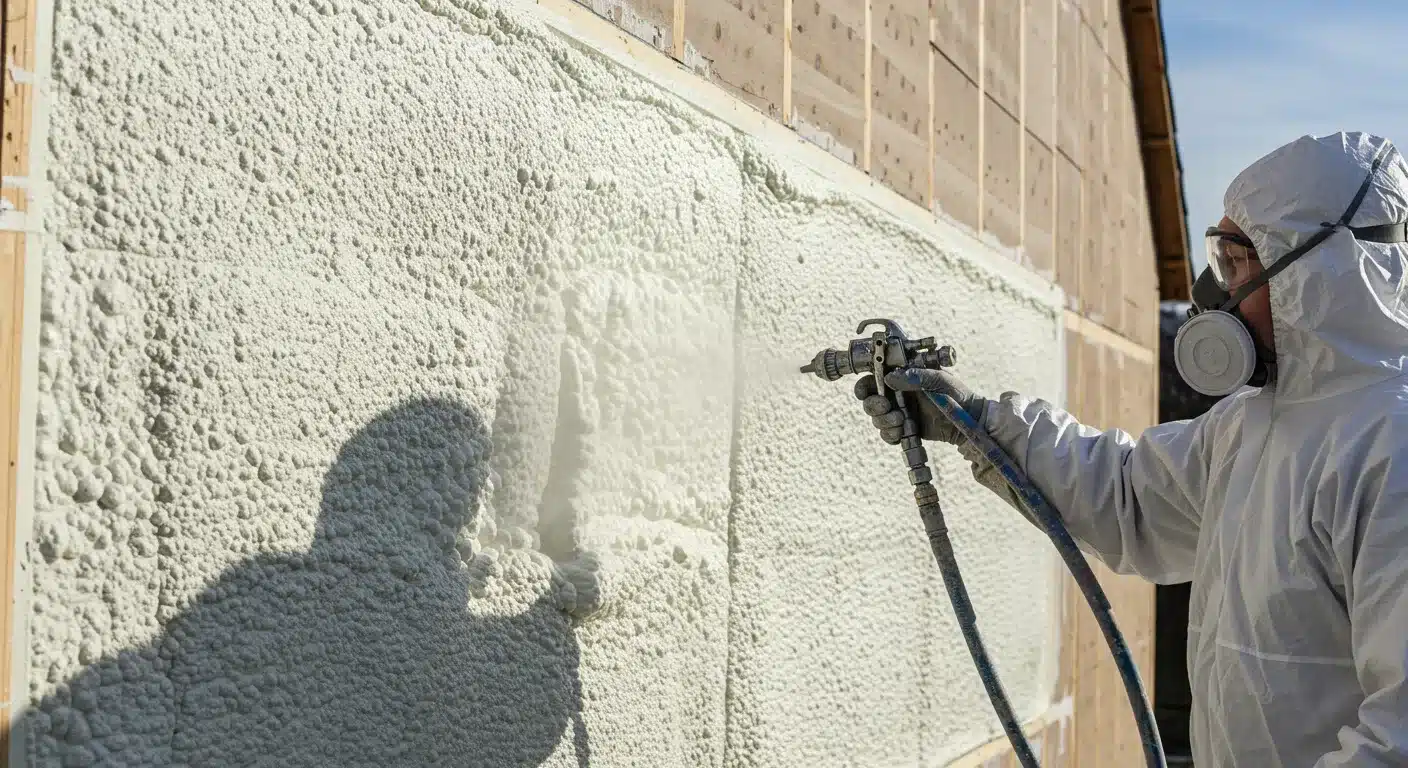Spray foam insulation is widely recognized for its ability to provide a seamless air barrier, moisture resistance, and high R-value. While commonly used for attics, crawl spaces, and interior walls, it is increasingly being applied to exterior walls as well. Understanding its advantages, limitations, and best practices can help determine if it is the right choice for your project.
Types of Spray Foam Insulation and Their Suitability for Exterior Walls
Spray foam insulation comes in two primary types:
Open-Cell Spray Foam
- Lower density and more flexible
- Allows some air and moisture permeability
- Typically used for interior applications
Closed-Cell Spray Foam
- Higher density and stronger structure
- Creates a vapor barrier
- Highly suitable for exterior walls due to its durability and resistance to the elements
Closed-cell spray foam is generally recommended for exterior walls because of its water resistance, strength, and insulating properties.
Advantages of Using Spray Foam on Exterior Walls
1. Superior Insulation Performance
Spray foam has a high R-value per inch, making it one of the most effective insulation materials. Closed-cell foam typically offers R-6 to R-7 per inch, providing better thermal resistance compared to fiberglass or cellulose.
2. Air and Moisture Barrier
Exterior walls are exposed to weather conditions that can cause moisture infiltration and energy loss. Spray foam creates an airtight seal, reducing the risk of mold growth and moisture-related damage.
3. Structural Reinforcement
Closed-cell spray foam enhances the structural integrity of walls by adding rigidity. This makes it particularly beneficial in areas prone to strong winds or extreme weather.
4. Long-Lasting Protection
Unlike traditional insulation materials, spray foam does not settle over time. It retains its effectiveness for decades, reducing maintenance costs.
Challenges and Considerations
1. Cost Factors
Spray foam insulation is more expensive upfront than traditional options. However, its energy savings and longevity often justify the investment.
2. Professional Installation Required
Applying spray foam to exterior walls requires expertise. It must be sprayed evenly and in the right thickness to achieve the best results.
3. Compatibility with Cladding Materials
When using spray foam on exterior walls, it’s important to ensure compatibility with siding materials. Some siding types may require additional ventilation or protective barriers.
Best Practices for Installing Spray Foam on Exterior Walls
- Surface Preparation: Ensure the wall surface is clean and dry before application.
- Correct Thickness: Follow manufacturer guidelines for the recommended spray thickness to avoid under- or over-application.
- Proper Sealing: Ensure all joints and gaps are properly sealed to maximize efficiency.
- Protection from UV Exposure: If spray foam is left exposed, it should be coated with UV-resistant paint or another protective layer to prevent degradation.
Is Spray Foam a Good Investment for Exterior Walls?
For homeowners and builders looking for a high-performance insulation solution, spray foam offers substantial benefits. While the initial cost is higher, the energy efficiency and durability make it a valuable long-term investment. If reducing heating and cooling costs and improving structural integrity are priorities, closed-cell spray foam is an excellent choice for exterior walls.
Considering Spray Foam for Your Project?
If you’re exploring insulation options for exterior walls, Albone’s Spray Foam provides expert consultation and professional installation services. Contact us at (585) 560-1369 or visit https://albonesprayfoam.com/ to learn more about how spray foam can improve your building’s efficiency.
Frequently Asked Questions
1. Can spray foam insulation be applied directly to exterior walls?
Yes, closed-cell spray foam can be applied directly to exterior walls, providing insulation, air sealing, and moisture resistance.
2. Will spray foam insulation affect the siding of my home?
In most cases, spray foam works well with different types of siding. However, some siding materials may require additional ventilation to prevent moisture buildup.
3. How long does spray foam insulation last on exterior walls?
Spray foam insulation can last 30 years or more when properly installed and protected from UV exposure.
4. Is it possible to install spray foam on an existing exterior wall?
Yes, but it requires removing the outer cladding or drilling access holes to apply the foam inside the wall cavity.
5. Does spray foam insulation make exterior walls more durable?
Yes, closed-cell spray foam adds structural strength to walls, making them more resistant to wind and impact damage.
6. How does spray foam compare to traditional insulation for exterior walls?
Spray foam offers superior air sealing, higher R-value, and moisture resistance compared to fiberglass or cellulose insulation.
7. Is spray foam insulation environmentally friendly?
Many modern spray foam products are formulated with environmentally friendly blowing agents and can contribute to energy savings, reducing overall carbon footprint.
8. Can spray foam insulation be painted?
Yes, but it should be coated with a UV-resistant paint or a protective barrier to prevent degradation from sunlight exposure.
9. What is the best season to install spray foam on exterior walls?
Spray foam is best applied in moderate weather conditions to ensure proper adhesion and expansion. Extreme temperatures can affect the curing process.
10. How much does it cost to insulate exterior walls with spray foam?
The cost varies based on wall size, foam thickness, and project complexity. Contact Albone’s Spray Foam at (585) 560-1369 for a detailed estimate.synthetics can improve soil drainage and resilience, making them effective for flood-prone regions.




